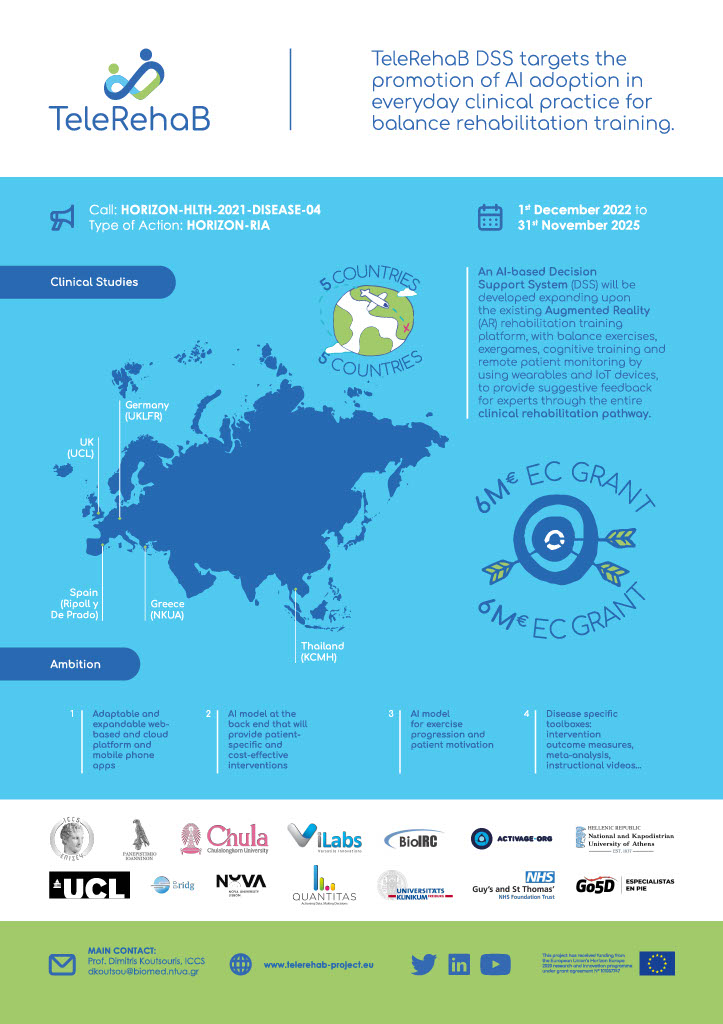ICCS /BEL is the project coordinator for TeleRehaB DSS
AI-powered remote personalized patient rehabilitation models for balance disorders
The HOLOBALANCE project developed wearables and IoT devices for balance rehabilitation and remote patient monitoring. The EU-funded TeleRehaB DSS project will develop an AI-based decision support system (DSS) building on the existing Augmented Reality (AR) rehabilitation training platform and the tools from the HOLOBALANCE project. The AI models will assess prognostic factors for the risk of falls, treatment effectiveness, outcomes, and side effects at the baseline level, using several retrospective data for initial training. The models will introduce automated balance intervention planning and management functionality to provide optimal personalized rehabilitation activities and ensure automated remote patient monitoring with wearables and IoT sensing devices, allowing rehabilitation training at home.
TeleRehaB DSS targets the promotion of AI adoption in everyday clinical practice for balance rehabilitation training. An AI-based decision support system (DSS) will be developed expanding upon the existing Augmented Reality (AR) rehabilitation training platform, with its balance exercises, exergames, cognitive training and remote patient monitoring with wearables and IoT devices from HOLOBALANCE project (TL6), to provide suggestive feedback for experts through the entire clinical rehabilitation pathway. The first component of AI models of TeleRehaB DSS will assess prognostic factors for risk of falls, treatment effectiveness, outcomes and side effects at baseline level, using a high volume of retrospective data for initial training. The other AI pillar of TeleRehaB DSS will introduce automated balance intervention planning and management functionality. The DSS will provide for each patient an optimal set of personalized rehabilitation activities, considering the best clinically effective treatment in conjunction with socio-economic effectiveness, and eHealth literacy. The later will be evaluated with a quick and easy to use tool with simple tasks to assess patient’s level of technological awareness (i.e., use of smart devices, AR and IoT equipment), in order to predict if this is going to affect compliance and adherence with interventions that rely on the use of such novel technologies. Finally, the most beneficial use of AI in TeleRehaB DSS will consist of automated remote patient monitoring with wearables and IoT sensing devices, allowing rehabilitation training programs to be performed at home. The DSS will evaluate in real-time patient performance, symptoms occurrence with virtual AR physio’s providing corrective and motivational feedback as activities are performed. These performance evaluation measures will be fed back to the DSS to support experts with their most time and effort-consuming activities of day-to-day patient management.


